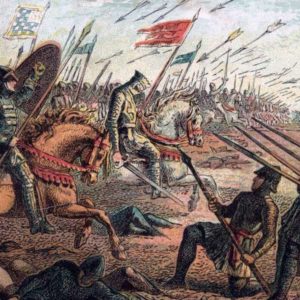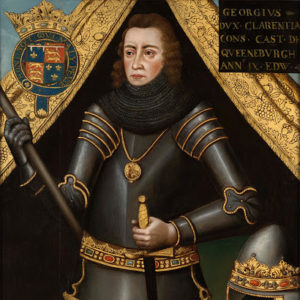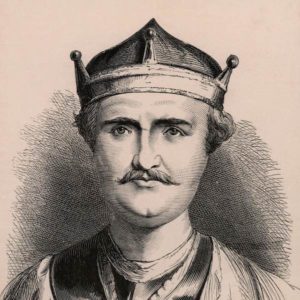
The Battle of Hastings commenced on the fourteenth of October 1066 between the Norman-French army of WilliamThe first, the Duke of Normandy, and an English army under the newfound Anglo-Saxon King Harold Godwinson, beginning the Norman conquest of England. It took place approximately 7 miles (11 kilometres) northwest of Hastings, close to the present-day town of Battle, East Sussex, and was a decisive Norman victory.

The background to the battle was the death of the deliberately childless King Edward the Confessor on the 5th January 1066, which set up a fantastic succession struggle between several different claimants to his throne, namely Harald Hardrada, Harold Godwinson, William the Conqueror and Edgar Atheling. Godwinson was coronated as the English Medieval king only very shortly after The Confessor’s Oppurtunal death, but faced several invasions by The Duke of Normandy, his own brother Tostig, and the Norwegian King Harald ‘Hard Ruler’ (Harold III of Norway). Hardrada and Tostig defeated a hastily gathered army of Englishmen at the Battle of Fulford on the twentieth of September of the year of 1066, and were in turn defeated by Harold at the Battle of Stamford Bridge five days later. The deaths of Tostig and Hardrada at Stamford Bridge left William as Harold’s only serious opponent, and The Conqueror would quickly prove a vast problem for Godwinson. While Harold and his forces were still recovering from being slaughtered by the combined forces of Tostig and The newly ‘Dead Ruler’, William landed his invasion forces in the south of England at Pevensey on 28 September 1066 and established a beachhead for his conquest of the kingdom. Harold was forced to march south incredibly swiftly, gathering forces as he went.

Even until now, it is unknown how many were actually present during the battle as today’s estimates vary considerably greatly. However, the actual composition of said forces have proven to far clearer; Godwinson’s own army was composed almost entirely of infantry and a mere microscopic amount of archers were present, while the Norman army consisted of around fifty percent infantry and the remaining were evenly split between archers and cavalry. Godwinson appears to have made in effort in trying to surprise The Conqueror, but the extremely and annoyingly hasty and snitch-like Norman scouts discovered Godwinson’s army and immediately reported it’s newfound presence to the great conqueror, who in return, marched the way from hastings over to the battlefield to confront Godwinson. The historical battled that followed then lasted from around the time of 9 am until dusk that day. All of the earliest efforts of the Norman invaders to try and even dent the British battle lines failed utterly and completely; therefore, the Norman soldiers tried to adopt the tactic of pretending to run away and flee in panic, before immediately turning back on their unsuspecting pursuers. Godwinson’s extremely devastating peril, probably nearer to the end of the battle, led to the retreat, surrender and defeat of most, if not all of the English army. After more marching and but a few measly skirmishes along the way, TheGreat William the Conqueror was coronated as the King of England on December 25th, Christmas day, 1066. The Conqueror’s powerful stance and tactics had proven superior to all other contenders to the English throne and changed England forever. The battle of hastings has also become a monumental part of British history, and ultimately, has proved that the most powerful of powerful would gladly die for more power.